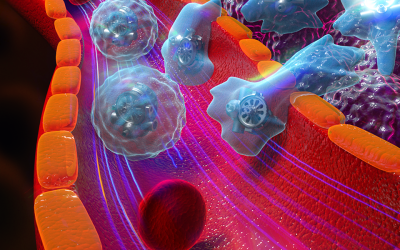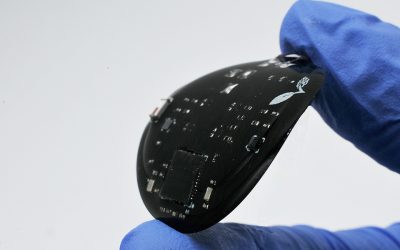By Zak Hughes, Deakin University
The first symposium in Australia dedicated to the subject of two-dimensional nanomaterials research, 2D15, took place in Melbourne on the 10th-11th March, 2015. The program showcased a rich variety of speakers coming from seven countries, who presented research covering a range of topical areas, including energy, the environment and nanomedicine.
2D nanomaterials, sheet-like structures with one dimension less than 100 nm, are an emerging class of materials. They have many fascinating properties and applications and are attracting increasing research interest around the world. This two-day event provided an opportunity for researchers to communicate their latest research and to network with some of the leading authorities in this field. The areas of focus for the meeting included advances in the fundamental physics, chemistry, materials science, biology and computational modelling of 2D materials, such as graphene, BN, MoS2 and transition metal dichalcogenide (TMD) nanosheets.
The chair of the symposium, Prof. Ying Chen from the Institute for Frontier Materials, Deakin University, says that the aim behind the Symposium was “to promote 2D nanomaterials research in Australia and to interact between researchers from different disciplines and from overseas”.
The meeting was opened by Prof. Brian Yates of the Australian Research Council, who gave an informative overview of the research funding landscape for those working in the nanomaterials space in Australia, and highlighted ways in which overseas researchers could get involved.
Kicking off the symposium with the first keynote talk Prof. Yury Gogotsi (Drexel University, USA) discussed recent progress in the very new and exciting area of MXenes, 2D materials comprising transition-metal carbides or carbonitrides. A key message of Prof. Gogotsi’s talk was how coordinated co-operation in this field, between a range of disciplines, will be key to realizing the significant beneficial potential of these new materials.
The ability of computational methods to help advance our understanding of 2D nanomaterials was one topic of the symposium. Prof. Irene Yarovsky (RMIT University, Australia) presented examples of how molecular simulation can provide insights into how graphitic nanomaterials can affect biomolecules, including those within the human body. Dr. Amanda Barnard of CSIRO discussed how computational methods can not only be used to generate data, but also to provide further insights by analysing data in new ways.
The possibilities, and challenges, of the use of 2D nanomaterials in the next generation of a variety of devices was a major theme of the symposium. Prof. Min Gu, Swinburne University of Technology, Australia discussed the promise that nanosheets have in photonic devices, including solar cells and optical information technology. There were a number of presentations on the potential of 2D nanostructures to meet the need for improved battery performance, including the keynote talk by Prof. Xiong Wen (David) Lou (Nanyang Technological University, Singapore).
In his keynote Prof. Dmitri Golberg (National Institute for Materials Science, Japan) discussed how the challenges associated with the characterization and analysis of 2D nanomaterials often require specific instruments. He outlined how in-situ transmission electron microscopy can not only provide insights into the structure of 2D nanomaterials but also into their physical, mechanical, optical and electrical properties.
“It is very clear from the workshop that 2D nanomaterials research is a fast growing field” was the opinion of A/Prof. Joselito Razal, one of the attendees of the symposium, “This is exciting because it means that, as new 2D nanomaterials are discovered in the laboratories, new understanding of properties and new applications could follow; and this has been the trend of late.”
The symposium also held a special session with Australian National Fabrication Facilities (ANFF) on the future challenges and capacity needs of nanofabrication in Australia in 2025. Participants suggested 2D nanomaterials will be a major research area in coming years and new fabrication facilities are required.
Summarizing the work presented in the symposium, Prof. Yury Gogotsi described the many exciting possibilities of 2D nanomaterials as the “missing piece in materials science”, but also highlighted some of the challenges facing the area. In particular the need to take 2D nanomaterials from the laboratory out into the “real world”.
The symposium was sponsored by the Institute for Frontier Materials, Deakin University and hosted by Deakin City Centre. The next symposium in the series will take place in 2017, at the University of Technology of Sydney, organized by Prof. Guoxiu Wang.
















